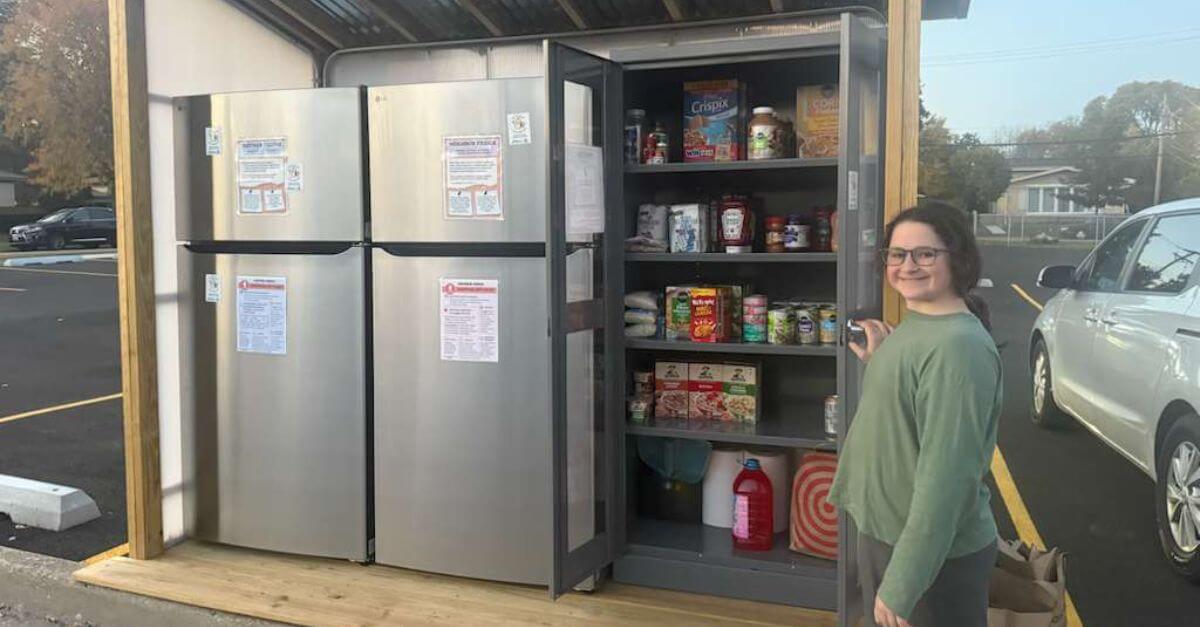TV Ripped My Son From Reality

Image by nate lavey

Ripped From My Life? A new ?Law & Order? episode hits a little too close for comfort for columnist Lenore Skenazy. Image by nate lavey
About two weeks ago, I was ripped from the headlines.
Ouch.
A friend sent me the link to a new “Law & Order: SVU” episode. “SVU,” in case you didn’t know, stands for Special Victims Unit — victims who are cuter, smaller or more heinously abused than usual.
So, it opens with a chubby-cheeked boy with curly brown hair about to leave for school, but first being patted by his loving mom.
“I can’t believe I’m letting you go to school on your own,” she says.
“Mom, everyone else in fourth grade does!” he replies.
She kisses him goodbye, and off he goes to the subway alone for the very first time.
Hmm.
As you may recall, I’m the mom somewhat famous for letting my own chubby-cheeked, curly-haired fourth grader take the New York City subway alone about three years ago, and then writing a newspaper column about it. I ended up on pretty much every news and talk show except “Oprah,” defending my decision. My son continues to take the train solo.
But I think you can guess what happened to the “Law & Order” boy seemingly modeled on mine. Or maybe you can’t — because not only was he murdered (duh), he was tortured first. Apparently, a mere child murder just isn’t gruesome enough to guarantee viewers will sit through the commercials anymore. So the SVU coroner uncovers the body and shows the exceptionally attractive detectives the cigarette burns all over the little boy’s chest. She also informs them that he was so scared, he wet his pants. (Nice touch!) And — just in case we watch it thinking, “Well at least it was fast, right?” — she adds that the boy was conscious every single agonizing second before being strangled by the very scarf his mom patted when she kissed him goodbye…. for the last time.
By that point, I was screaming at the screen. Actually, I started screaming the second I saw that boy, who looked like mine, except dead in the morgue, pockmarked by burns. It was way too real.
But in a way it was too unreal, too — too much the very scariest, worst case scenario that I don’t want dominating my brain when I try to make my parenting decisions.
As a Jewish mom, I am, by definition, a stereotype, and by my own personal DNA, a worrier. But I spend a lot of time trying to remind myself (and anyone who’ll listen) that while it’s easy to go to some very dark places when we think about our little ones in the big, wide world, that anxiety is OUR problem — not our kids’. We can keep our kids right next to us to reassure ourselves they’re fine. Or we can teach them basic safety, pray for the best and then let them go — as we deal with our fears.
I let them go.
That is harder to do the more scary images we are exposed to. And we are exposed to more than our own parents ever were, thanks to a media obsessed with abductions.
Yes, terrible things sometimes really do happen. The heartbreaking case of Leiby Kletzky, murdered on his first walk home from camp in Brooklyn last summer, reminds us of that. But in real life, those tragedies are, thank God, rare. On TV, they are as common as car commercials, and they end up changing our perception of children’s safety.
Gallup polls keep showing that most people think crime is going up when, in fact, the crime rate has been plummeting since the mid-’90s. It is lower now than when most parents were playing outside as kids, and no one thought that was crazy. And yet, while the majority of children walked to school when I was growing up, now it’s about one in 10. Drive around some neighborhoods, and it’s as if the kids have evaporated.
Crime shows are obviously going to be about crime, but when they “rip” their stories from the headlines and then add cigarette burns, they warp our idea of what it’s like out there. A Mayo Clinic study a few years back compared the crimes on two seasons of “CSI: Miami” with two seasons of actual homicides. One of the biggest discrepancies it found was that in the real world the vast majority of crimes are committed by people who know each other. On TV, the perp is far more often a stranger. It starts to feel as if our children are in danger every time they leave the house.
On this particular episode of “Law & Order” — spoiler alert! — the murderers turn out to belong to that other group of people parents are being told to fear more than ever: bullies — two beautiful high-school girls who just happen to burn and strangle the boy because that’s what bullies do, or hadn’t you heard?
This is why my own story of a boy who took a subway on his own and NOTHING HAPPENED became such big news. It was shocking because everything else we see on TV tells us the very opposite: No child can survive without a parent by his side.
Among all the angry notes I got, one man wrote: “How DARE you let your son ride the subway alone? Don’t you watch ‘Law & Order’?”
Mostly, I do not. Because when I do, I get too scared to give my kids a childhood. And that’s a crime I don’t want to commit.
Lenore Skenazy is the author of the book “Free-Range Kids” (Wiley, 2010) and the founder of a blog of the same name.















